- Home
- Lawrence Block
Step by Step Page 9
Step by Step Read online
Page 9
You’d get some glory, among the relative handful of people who paid attention to that sort of thing. But some elite runners didn’t even want the glory, and it wasn’t uncommon for a couple of lead runners to deliberately adjust their pace at the end and breast the tape hand in hand, demonstrating that this was a sport without winners and losers, that everyone who finished was victorious.
And that, of course, was what brought the vast majority of runners to the starting line, and carried them through to the finish. A race was by definition a competitive event. You might time your training runs, might try to go all out and cover the distance in the shortest time possible, but it was never the same as participating in a race with other runners. Even if it was what they called a fun run, even if no one was recording the times, when you were one of a group of runners, when they blew a whistle or fired a pistol to signal the start, when there was a finish line to be crossed, it was a race.
But you didn’t have to win it to be a winner. All you had to do was finish. You would try to do better than you’d done in your last race—and, as a way of delivering your best possible performance, you might make a special effort to overtake the fellow running a few steps ahead of you. But that didn’t really matter, and you’d forget him the moment you passed him, even as you’d forget the runners who ran past you.
You and the others were in this together, but your competition was not with them but with yourself. You pinned a race number on your singlet, repinned it a few times, tied your shoelaces, retied them a dozen times, peed and peed and peed again, and finally took your place at the start and waited for the race to begin.
Remember what George Sheehan named as distinguishing a runner from a jogger? A race number.
9
I READ THE MAGAZINES, Runner’s World and Running Times, and the message began to soak in. What I was doing every day was not an end in itself. It was preparation, and I was preparing to race.
I found the prospect very exhilarating, and I also found it terrifying. Looking back, I can understand the excitement, but what was I scared of? That others might finish ahead of me? I knew they would, virtually all of them, and so what?
That I would have a heart attack and die? That a bear would escape from the zoo and run me down and kill me? No, none of that.
I was afraid I’d embarrass myself.
Now I was realistic enough to realize that, if a few hundred people joined me in this race, every last one of them was going to be concentrating on his or her own performance, and paying no attention whatsoever to me. I could finish dead last, and the only person likely to be aware of this would be the person who finished immediately ahead of me. And how would he feel toward me? Would he hold me in contempt? Hell, no. He’d be grateful, hugely grateful, for wouldn’t I have just spared him the ignominy of a last-place finish?
I knew all this, and it didn’t help a whole hell of a lot. I was desperately afraid of failing at an event in which there was no such thing as failure.
IT DIDN’T HOLD me back forever. There came a time when I had a trip to Buffalo coming up, and discovered that Running Times carried a listing for a race that very weekend in Orchard Park, a Buffalo suburb. Here was a perfect opportunity; no one would know me, no one would recognize me, and no one back in New York would learn what I’d done. If I disgraced myself, it would be my little secret.
The real trick, it seemed to me, lay in finding Orchard Park. I borrowed my mother’s car and drove there, paid an entry fee of a couple of dollars, pinned a number on my shirt, and began worrying about my performance. I had two goals: to finish the race, and to get across the finish line ahead of at least one other person.
In due course they signaled the start and I took off. I’d read enough to know that neophytes all made the same mistake. They invariably started too fast, and did so without realizing it; the excitement of the race caught them up, and what felt to them like their usual easy pace was actually a good deal speedier. They kept this up as long as they could, and then they burned out, and wound up in trouble. But I knew this, see, and so I knew to guard against it.
And did it anyway.
The race was an odd distance, 6.55 miles. The course was an asphalt loop 1.31 miles long, and we were required to go around it five times. I ran along, establishing what felt like a brisk pace but certainly not pushing it, and by the time I was a little ways into the third lap my heart was pounding and I was gasping for breath.
I felt like someone who’d just failed a stress test. I also felt like a low-grade moron, because I realized instantly what had happened, and that it had all been my fault. I’d gone out too fast, and the result was just what I’d so often read in the books and magazines. I’d outrun my capacity, and I couldn’t keep going. I couldn’t continue at that pace, nor could I gear down and jog along more slowly. I could no longer do any running at all.
So I did what I’d done during those first circuits of Washington Square. I walked, feeling like an abject failure. It was a race for runners, for God’s sake, and that’s what I was, a runner, and what was I doing? I was walking.
But at least it would move me along toward the end of the race. And after I’d walked for a while I was able to run again. I didn’t run well, I’d done too good a job of exhausting myself, but I was running now instead of walking, and that seemed to matter to me. I kept going until I’d finished the fifth lap and completed the race, and then I watched as, remarkably, quite a few people came in behind me.
One of their number, not last but not far from it, was a fellow who looked to be about twenty-five or thirty, and who’d walked the entire race. I thought that was pretty curious—a walker in a race full of runners?—but at least I’d beaten him. As much as I’d sabotaged myself, as poorly as I’d run the race, at least I’d come in ahead of the walker.
How ignominious if I hadn’t!
MY TIME IN the Orchard Park 6.55-mile race was 59:33.
And how do I know that? Well, I wrote it down. In 1979 I bought a book called Run Farther, Run Faster by Joe Henderson. Sometime in 1980, when I started racing more frequently, I began logging the results of each race on the blank pages at the end of the book. I entered my eight 1980 races as they occurred, and then I found a space on another page and noted the four races I’d done the previous year, along with my official time in each. (For one, a fiercely hilly 10K in Upper Manhattan, I knew the minutes but not the seconds; my notation reads Heights-Inwood 10K—53:??)
I went on entering each race as I ran it, through late October of 1982. When I remembered, I included the date. Almost invariably, I noted my race number as well, though why I thought that information worth preserving is quite beyond me. Keeping track of my races was evidently important to me, and when I knocked around the country in the summer of ’81, toting a backpack that was as light as I could make it, I made room in that backpack for Joe Henderson’s book. I ran eight races in six states, and logged them all.
The last race in the book was an 8K in Central Park on Halloween in 1982. I was living in Brooklyn at the time, on Manhattan Avenue in Greenpoint, and I went home and entered the race in my book, noting my time and bib number. And then I put the book away and didn’t enter a race again until January 9, 2005.
It was a five-mile race, held on the same course as that Halloween race, and when I got back to my Greenwich Village apartment one of the first things I did was go to the bookshelf and take down the Joe Henderson book. It was the only running book I still owned, and I’d kept it only because it had my log in the back. I opened it up, found the final 1982 entry, and drew a line under it. Under the line I wrote “2005” and under that I entered all the data from the new race—the date, the name of the race, my race number, and my official time.
MY SECOND RACE in 1979 was the New Harlem 10K. It was sponsored by New York Road Runners, and held on the streets of Harlem, streets I ordinarily had no reason to visit. Someone—I believe it was Jimmy Breslin—wrote a day or two later about the bemused response of the neighb
orhood’s residents to the presence that Sunday morning of “a thousand skinny white guys running around in their underwear.”
I’d learned from Orchard Park, and when the race started I set out at a sane pace and had no trouble maintaining it all the way to the finish. My time was 51:49, and the number I wore was #2156, but what was really great was that I got to take something home besides my time and race bib. I got a shirt.
Well, so did everyone else who entered the race. This particular shirt was a cotton singlet, with the name of the race on its front. The shirt was white, the lettering red and blue. I wore it with pride.
I ran two more races that year, the Heights-Inwood 10K (with a steep and nasty downhill stretch in Fort Tryon Park; the uphills tire you, but the downhills wreck your knees) and a 7.6-mile race in Bennington, Vermont, about which I remember nothing beyond the fact that I combined it with a week’s vacation in that state. (And my time, of course: 1:08:18.) They didn’t give out shirts in Bennington, but I got a T-shirt at the Heights-Inwood race, and at most of the eight races I ran the following year.
All eight were in the late summer and fall. It must have been around that time that I joined New York Road Runners. Members paid a dollar or two less to enter races, and I’d reached a point where I was likely to save more than the cost of my membership. There were other activities offered to members as well, group training runs and various sorts of instruction, but they were all held on the east side of Central Park, at Ninetieth Street and Fifth Avenue, and I was then living on Greenwich Street in the Village, and getting from one point to the other was, well, not exactly a walk in the park. (Most of the NYRR races started there as well, but that struck me as worth it.)
The last race of 1980 was my longest to date, ten hilly miles in Central Park on December 14. And it was around that time that I started dreaming marathon dreams.
They’d held the New York Marathon in November, but of course I hadn’t even considered participating. I knew I wouldn’t be able to go the distance, but I also knew it was something I wanted to do eventually. And around that time I read in my running magazines that the first London Marathon would be held the end of March. I’d been to London a year or so earlier, it was a city I’d visited a few times over the years, and I thought it would be exciting to go back again, this time to participate in the first running of the marathon.
According to what I’d read, I had enough time to train for the distance. All I wanted was to be able to finish, and that seemed a reasonable goal.
And, happily enough, the NYRR race schedule would assist me toward that end. Along with a few shorter races, the club’s winter schedule included 15K and 20K races in consecutive weeks in January, and 25K and 20-mile races in February. That 20-mile race was held five weeks before the marathon, and would be a mere 6.2 miles less than I’d have to go in London. That made it a perfect steppingstone, and I figured I could get there, step by step, so I mailed in my registration for the race, booked my flight to London, and got down to the serious business of training.
I figured I could do it. And, like that first race in Orchard Park, it was a long way from New York, in a city where nobody knew me. If I screwed up, who’d know?
AS 1981 GOT under way, I increased my training mileage. By this time the city had closed the old West Side Highway, an elevated stretch of road that had begun to crumble and was scheduled for demolition. For now, though, there was a stretch of it in Lower Manhattan, extending from the Battery to Fourteenth Street, that was closed to cars but open to runners.
(And to roller skaters, too. One time I was up there on the empty highway, heading north and knocking off the miles, when two southbound skaters hove into view. As they came closer I saw they were a man and a woman, and as they drew abreast, so to speak, the woman’s face lit up with a blinding smile even as she opened her shirt wide to show me her breasts. Then they were gone, and I never saw them again, though I never entirely lost hope until the city knocked the highway down.)
I trained every day, upping my mileage each week, as recommended. And I raced every weekend, which was manifestly not recommended. But the club kept scheduling races and handing out T-shirts, and I couldn’t resist.
The longer races were probably a good idea, preparing me to go the distance in London. The shorter races, four and five and six miles, were probably not a good idea, but they didn’t seem to be hurting me. And I don’t know that they did me any damage, nor did the long miles of training.
I was averaging nine-minute miles in the shorter races, and my time wasn’t that much slower in the longer efforts. I logged 1:28 in a 15K race, 2:01 at 20K. On February 8, my log tells me, I covered 25 kilometers in two hours and forty-five minutes. I remember that race, and I recall that I was in pain during it, but I finished it. That may have been a mistake, but it was nothing compared to the mistake I made the following week during a training run.
I was on my way to the West Side Highway, and as I ran across West Street toward the ramp leading up to the elevated roadway, I put a foot wrong and did something bad to my right knee. It hurt—Christ, it hurt—and if I had it to do over again I’d stop then and there, walk slowly and carefully home, ice the knee, take the rest of the week off, and then start training again, slowly and carefully.
That’s not what I did.
Instead, I forced myself up the ramp and onto the highway, and I ran for a while. And by the end of that day’s workout my knee hurt a lot worse than it had before, and it still hurt when I got home and when I woke up the next morning. For a day or two I kept trying to run through it—because I had a marathon coming up, and I needed to get the miles in, didn’t I?
You know, you’d expect this sort of stupidity in a kid, but I was forty-two years old at the time. What the hell was I thinking?
WHATEVER I WAS thinking, after a couple of days I had to stop thinking it. My knee was really hurting, and every time I went out and ran I only managed to make it worse. It would fool me from time to time, because it only hurt when I ran. The impact of my weight coming down on a bent knee was extremely painful, but when I walked I experienced at worst a slight ache and, most of the time, no pain whatsoever.
At first all I could think of was that the London Marathon was a washout. The entry fee I’d paid was really the least of it. I don’t remember how much it was, but it couldn’t have been more than twenty-five dollars or so. The several hundred dollars I’d paid for a plane ticket represented a more substantial loss. But it too was less significant than the fact that I’d really been looking forward to this experience, and now my own ignorance and stupidity was going to deprive me of it.
Unless I just went and walked it.
At that first race in Orchard Park, my feelings toward the race’s single walker had hovered somewhere between puzzlement and contempt. Walking, after all, was what I’d done before I taught myself how to run. In a race, where the object was to get from the start to the finish as rapidly as possible, why would someone deliberately select a slower gait? What sense did that make?
Since then I’d learned to view walkers differently. There was a walker contingent in every NYRR race, and the first three across the finish line qualified for trophies. They were not just walkers, they were racewalkers, and when I watched them I had to admit they looked good. There was something amusing at first glance about that hip-wiggling form, but it didn’t take long to get used to it, and once you did you stopped seeing it as funny-looking.
More impressive, though, was how racewalkers looked at the end of a race. The slower and less well-conditioned runners tended to reach the finish line looking like the wreck of the Hesperus. Their backs would be curled in one direction, their necks bent the other way in a heroic attempt to hold their heads up. They held their limp hands up in front of them like dogs begging for a treat. Many of them really looked awful, and if those back-of-the-packers were the only runners a person ever saw, it would be hard to convince him that the enterprise was good for you.
The racewal
kers, on the other hand, strode toward the tape with their heads held high, their posture impeccable, and their arms swinging resolutely at their sides. They might be finishing days behind the leading runners, but they’d cross the line ahead of many of the real schleppers, and they’d look damn good while they did so.
So I’d come to respect the racewalkers. I didn’t want to be one, but that didn’t mean there was anything wrong with them or what they were doing.
IF I COULD racewalk, I could go on training over the next several weeks without further damaging my knee. I’d stay in condition, and if my knee mended quickly enough, I might be able to run London after all. Failing that, maybe I could walk it.
But first I had to learn how to racewalk.
I’d had to learn to run, too, during those early laps around Washington Square, but I hadn’t needed anybody to teach me. But racewalking was different. It involved a curious stiff-legged stride that never came naturally to anyone, except perhaps an early-stage robot.
Now some people might be capable of picking up the technique of racewalking by watching others and duplicating their movements, but I’d have been as likely to learn to fly by watching a bird. Did I mention that I was the only kid in my kindergarten class who couldn’t figure out how to skip? (I did learn, though, because my mother taught me. Years later, when Mrs. Goldfus shouldered me from fifth to seventh grade, my mother took a certain poetic satisfaction in the fact that the boy who couldn’t skip had managed to skip all of sixth grade.)

 Tanner on Ice
Tanner on Ice Hit Me
Hit Me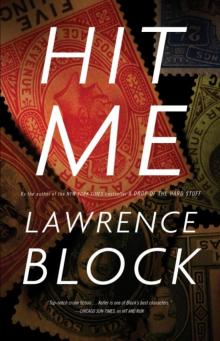 Hit and Run
Hit and Run Hope to Die
Hope to Die Two For Tanner
Two For Tanner Tanners Virgin
Tanners Virgin Dead Girl Blues
Dead Girl Blues One Night Stands and Lost Weekends
One Night Stands and Lost Weekends A Drop of the Hard Stuff
A Drop of the Hard Stuff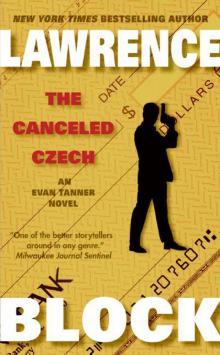 The Canceled Czech
The Canceled Czech Even the Wicked
Even the Wicked Me Tanner, You Jane
Me Tanner, You Jane Quotidian Keller
Quotidian Keller Small Town
Small Town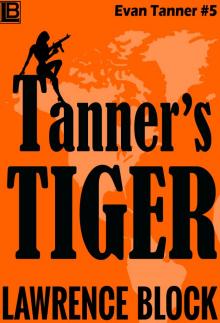 Tanners Tiger
Tanners Tiger A Walk Among the Tombstones
A Walk Among the Tombstones Tanners Twelve Swingers
Tanners Twelve Swingers Gym Rat & the Murder Club
Gym Rat & the Murder Club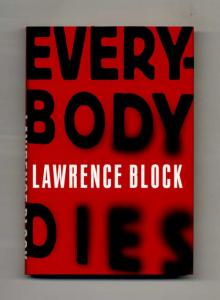 Everybody Dies
Everybody Dies The Thief Who Couldnt Sleep
The Thief Who Couldnt Sleep Hit Parade
Hit Parade The Devil Knows Youre Dead
The Devil Knows Youre Dead The Burglar in Short Order
The Burglar in Short Order A Long Line of Dead Men
A Long Line of Dead Men Keller's Homecoming
Keller's Homecoming Resume Speed
Resume Speed Keller's Adjustment
Keller's Adjustment Eight Million Ways to Die
Eight Million Ways to Die Time to Murder and Create
Time to Murder and Create Out on the Cutting Edge
Out on the Cutting Edge A Dance at the Slaughter House
A Dance at the Slaughter House In the Midst of Death
In the Midst of Death When the Sacred Ginmill Closes
When the Sacred Ginmill Closes You Could Call It Murder
You Could Call It Murder Keller on the Spot
Keller on the Spot A Ticket to the Boneyard
A Ticket to the Boneyard A Time to Scatter Stones
A Time to Scatter Stones Keller's Designated Hitter
Keller's Designated Hitter A Stab in the Dark
A Stab in the Dark Sins of the Fathers
Sins of the Fathers The Burglar in the Closet
The Burglar in the Closet Burglar Who Dropped In On Elvis
Burglar Who Dropped In On Elvis The Burglar Who Painted Like Mondrian
The Burglar Who Painted Like Mondrian The Girl With the Long Green Heart
The Girl With the Long Green Heart The Burglar Who Counted the Spoons (Bernie Rhodenbarr)
The Burglar Who Counted the Spoons (Bernie Rhodenbarr) Burglar Who Smelled Smoke
Burglar Who Smelled Smoke Rude Awakening (Kit Tolliver #2) (The Kit Tolliver Stories)
Rude Awakening (Kit Tolliver #2) (The Kit Tolliver Stories) Don't Get in the Car (Kit Tolliver #9) (The Kit Tolliver Stories)
Don't Get in the Car (Kit Tolliver #9) (The Kit Tolliver Stories) CH04 - The Topless Tulip Caper
CH04 - The Topless Tulip Caper You Can Call Me Lucky (Kit Tolliver #3) (The Kit Tolliver Stories)
You Can Call Me Lucky (Kit Tolliver #3) (The Kit Tolliver Stories) CH02 - Chip Harrison Scores Again
CH02 - Chip Harrison Scores Again Strangers on a Handball Court
Strangers on a Handball Court Cleveland in My Dreams
Cleveland in My Dreams Clean Slate (Kit Tolliver #4) (The Kit Tolliver Stories)
Clean Slate (Kit Tolliver #4) (The Kit Tolliver Stories) The Burglar Who Traded Ted Williams
The Burglar Who Traded Ted Williams Burglar on the Prowl
Burglar on the Prowl In For a Penny (A Story From the Dark Side)
In For a Penny (A Story From the Dark Side) Catch and Release Paperback
Catch and Release Paperback Ride A White Horse
Ride A White Horse No Score
No Score Looking for David (A Matthew Scudder Story Book 7)
Looking for David (A Matthew Scudder Story Book 7)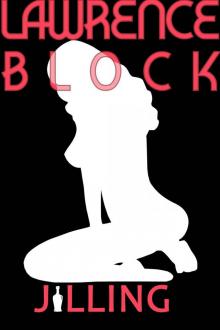 Jilling (Kit Tolliver #6) (The Kit Tolliver Stories)
Jilling (Kit Tolliver #6) (The Kit Tolliver Stories) Ariel
Ariel Enough Rope
Enough Rope Grifter's Game
Grifter's Game Canceled Czech
Canceled Czech Unfinished Business (Kit Tolliver #12) (The Kit Tolliver Stories)
Unfinished Business (Kit Tolliver #12) (The Kit Tolliver Stories) Thirty
Thirty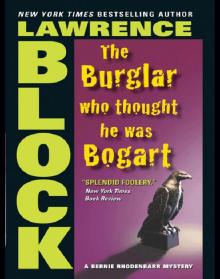 The Burglar Who Thought He Was Bogart
The Burglar Who Thought He Was Bogart Make Out with Murder
Make Out with Murder One Last Night at Grogan's (A Matthew Scudder Story Book 11)
One Last Night at Grogan's (A Matthew Scudder Story Book 11) The Burglar on the Prowl
The Burglar on the Prowl Welcome to the Real World (A Story From the Dark Side)
Welcome to the Real World (A Story From the Dark Side) Keller 05 - Hit Me
Keller 05 - Hit Me Walk Among the Tombstones: A Matthew Scudder Crime Novel
Walk Among the Tombstones: A Matthew Scudder Crime Novel Ronald Rabbit Is a Dirty Old Man
Ronald Rabbit Is a Dirty Old Man The Burglar Who Studied Spinoza
The Burglar Who Studied Spinoza The Burglar Who Liked to Quote Kipling
The Burglar Who Liked to Quote Kipling Keller in Des Moines
Keller in Des Moines Hit List
Hit List The Dettweiler Solution
The Dettweiler Solution HCC 115 - Borderline
HCC 115 - Borderline A Drop of the Hard Stuff: A Matthew Scudder Novel
A Drop of the Hard Stuff: A Matthew Scudder Novel Step by Step
Step by Step The Girl With the Deep Blue Eyes
The Girl With the Deep Blue Eyes If You Can't Stand the Heat (Kit Tolliver #1) (The Kit Tolliver Stories)
If You Can't Stand the Heat (Kit Tolliver #1) (The Kit Tolliver Stories) The Topless Tulip Caper
The Topless Tulip Caper Dolly's Trash & Treasures (A Story From the Dark Side)
Dolly's Trash & Treasures (A Story From the Dark Side) The Triumph of Evil
The Triumph of Evil Fun with Brady and Angelica (Kit Tolliver #10 (The Kit Tolliver Stories)
Fun with Brady and Angelica (Kit Tolliver #10 (The Kit Tolliver Stories) Burglars Can't Be Choosers
Burglars Can't Be Choosers Who Knows Where It Goes (A Story From the Dark Side)
Who Knows Where It Goes (A Story From the Dark Side) Deadly Honeymoon
Deadly Honeymoon Like a Bone in the Throat (A Story From the Dark Side)
Like a Bone in the Throat (A Story From the Dark Side) A Chance to Get Even (A Story From the Dark Side)
A Chance to Get Even (A Story From the Dark Side)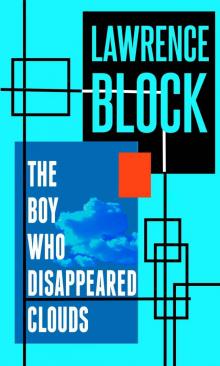 The Boy Who Disappeared Clouds
The Boy Who Disappeared Clouds Collecting Ackermans
Collecting Ackermans Waitress Wanted (Kit Tolliver #5) (The Kit Tolliver Stories)
Waitress Wanted (Kit Tolliver #5) (The Kit Tolliver Stories) One Thousand Dollars a Word
One Thousand Dollars a Word Even the Wicked: A Matthew Scudder Novel (Matthew Scudder Mysteries)
Even the Wicked: A Matthew Scudder Novel (Matthew Scudder Mysteries) Hit Man
Hit Man The Night and The Music
The Night and The Music Ehrengraf for the Defense
Ehrengraf for the Defense The Merciful Angel of Death (A Matthew Scudder Story Book 5)
The Merciful Angel of Death (A Matthew Scudder Story Book 5) The Burglar in the Rye
The Burglar in the Rye I Know How to Pick 'Em
I Know How to Pick 'Em Getting Off hcc-69
Getting Off hcc-69 Three in the Side Pocket (A Story From the Dark Side)
Three in the Side Pocket (A Story From the Dark Side)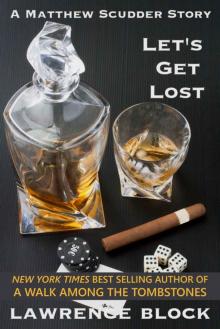 Let's Get Lost (A Matthew Scudder Story Book 8)
Let's Get Lost (A Matthew Scudder Story Book 8) Strange Are the Ways of Love
Strange Are the Ways of Love MOSTLY MURDER: Till Death: a mystery anthology
MOSTLY MURDER: Till Death: a mystery anthology Masters of Noir: Volume Four
Masters of Noir: Volume Four A Week as Andrea Benstock
A Week as Andrea Benstock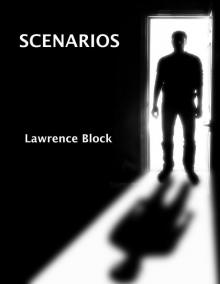 Scenarios (A Stoiry From the Dark Side)
Scenarios (A Stoiry From the Dark Side) The Sex Therapists: What They Can Do and How They Do It (John Warren Wells on Sexual Behavior Book 15)
The Sex Therapists: What They Can Do and How They Do It (John Warren Wells on Sexual Behavior Book 15)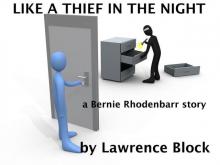 Like a Thief in the Night: a Bernie Rhodenbarr story
Like a Thief in the Night: a Bernie Rhodenbarr story A Diet of Treacle
A Diet of Treacle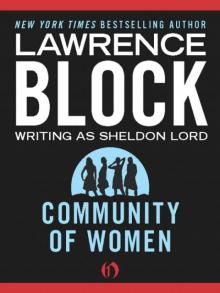 Community of Women
Community of Women Different Strokes: How I (Gulp!) Wrote, Directed, and Starred in an X-rated Movie (John Warren Wells on Sexual Behavior)
Different Strokes: How I (Gulp!) Wrote, Directed, and Starred in an X-rated Movie (John Warren Wells on Sexual Behavior) You Don't Even Feel It (A Story From the Dark Side)
You Don't Even Feel It (A Story From the Dark Side) Zeroing In (Kit Tolliver #11) (The Kit Tolliver Stories)
Zeroing In (Kit Tolliver #11) (The Kit Tolliver Stories) The Wife-Swap Report (John Warren Wells on Sexual Behavior)
The Wife-Swap Report (John Warren Wells on Sexual Behavior) Keller's Fedora (Kindle Single)
Keller's Fedora (Kindle Single) Speaking of Lust
Speaking of Lust Everybody Dies (Matthew Scudder)
Everybody Dies (Matthew Scudder) Defender of the Innocent: The Casebook of Martin Ehrengraf
Defender of the Innocent: The Casebook of Martin Ehrengraf After the First Death
After the First Death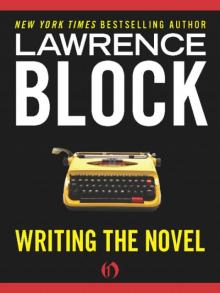 Writing the Novel
Writing the Novel How Far - a one-act stage play
How Far - a one-act stage play Chip Harrison Scores Again
Chip Harrison Scores Again The Topless Tulip Caper ch-4
The Topless Tulip Caper ch-4 The Crime of Our Lives
The Crime of Our Lives Killing Castro
Killing Castro The Trouble with Eden
The Trouble with Eden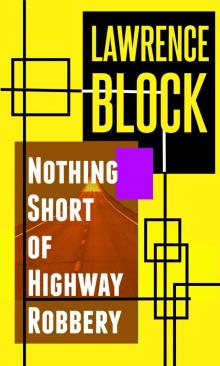 Nothing Short of Highway Robbery
Nothing Short of Highway Robbery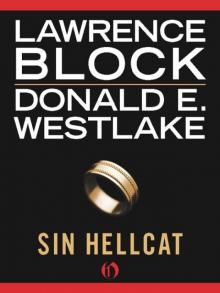 Sin Hellcat
Sin Hellcat Getting Off: A Novel of Sex & Violence (Hard Case Crime)
Getting Off: A Novel of Sex & Violence (Hard Case Crime) Coward's Kiss
Coward's Kiss Alive in Shape and Color
Alive in Shape and Color Blow for Freedom
Blow for Freedom The New Sexual Underground: Crossing the Last Boundaries (John Warren Wells on Sexual Behavior Book 10)
The New Sexual Underground: Crossing the Last Boundaries (John Warren Wells on Sexual Behavior Book 10) April North
April North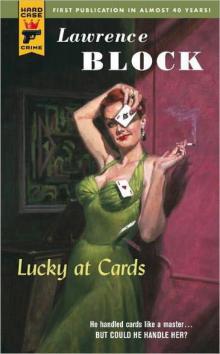 Lucky at Cards
Lucky at Cards One Night Stands; Lost weekends
One Night Stands; Lost weekends Sweet Little Hands (A Story From the Dark Side)
Sweet Little Hands (A Story From the Dark Side) Blood on Their Hands
Blood on Their Hands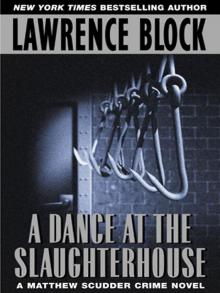 A Dance at the Slaughterhouse
A Dance at the Slaughterhouse Headaches and Bad Dreams (A Story From the Dark Side)
Headaches and Bad Dreams (A Story From the Dark Side) Keller's Therapy
Keller's Therapy The Specialists
The Specialists Hit and Run jk-4
Hit and Run jk-4 Threesome
Threesome Love at a Tender Age (John Warren Wells on Sexual Behavior)
Love at a Tender Age (John Warren Wells on Sexual Behavior) The Devil Knows You're Dead: A MATTHEW SCUDDER CRIME NOVEL
The Devil Knows You're Dead: A MATTHEW SCUDDER CRIME NOVEL Funny You Should Ask
Funny You Should Ask CH01 - No Score
CH01 - No Score Sex and the Stewardess (John Warren Wells on Sexual Behavior)
Sex and the Stewardess (John Warren Wells on Sexual Behavior) A Madwoman's Diary
A Madwoman's Diary When This Man Dies
When This Man Dies Sinner Man
Sinner Man Such Men Are Dangerous
Such Men Are Dangerous A Strange Kind of Love
A Strange Kind of Love Enough of Sorrow
Enough of Sorrow 69 Barrow Street
69 Barrow Street A Moment of Wrong Thinking (Matthew Scudder Mysteries Series Book 9)
A Moment of Wrong Thinking (Matthew Scudder Mysteries Series Book 9) Eight Million Ways to Die ms-5
Eight Million Ways to Die ms-5 Warm and Willing
Warm and Willing Mona
Mona In Sunlight or In Shadow
In Sunlight or In Shadow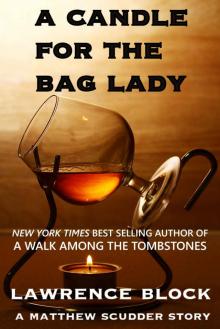 A Candle for the Bag Lady (Matthew Scudder Book 2)
A Candle for the Bag Lady (Matthew Scudder Book 2) Conjugal Rites (Kit Tolliver #7) (The Kit Tolliver Stories)
Conjugal Rites (Kit Tolliver #7) (The Kit Tolliver Stories)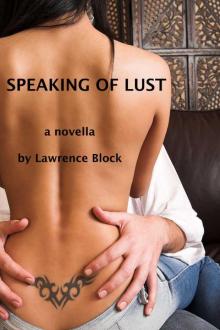 Speaking of Lust - the novella
Speaking of Lust - the novella Gigolo Johnny Wells
Gigolo Johnny Wells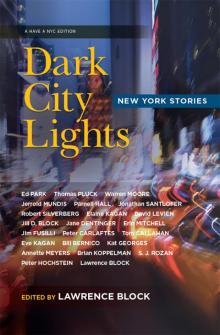 Dark City Lights
Dark City Lights Versatile Ladies: the bisexual option (John Warren Wells on Sexual Behavior)
Versatile Ladies: the bisexual option (John Warren Wells on Sexual Behavior) Passport to Peril
Passport to Peril The Taboo Breakers: Shock Troops of the Sexual Revolution (John Warren Wells on Sexual Behavior)
The Taboo Breakers: Shock Troops of the Sexual Revolution (John Warren Wells on Sexual Behavior) Lucky at Cards hcc-28
Lucky at Cards hcc-28 Campus Tramp
Campus Tramp 3 is Not a Crowd (John Warren Wells on Sexual Behavior)
3 is Not a Crowd (John Warren Wells on Sexual Behavior)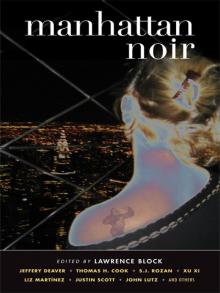 Manhattan Noir
Manhattan Noir The Burglar in the Library
The Burglar in the Library Doing It! - Going Beyond the Sexual Revolution (John Warren Wells on Sexual Behavior Book 13)
Doing It! - Going Beyond the Sexual Revolution (John Warren Wells on Sexual Behavior Book 13) So Willing
So Willing The Burglar Who Traded Ted Williams br-6
The Burglar Who Traded Ted Williams br-6 Candy
Candy Sex Without Strings: A Handbook for Consenting Adults (John Warren Wells on Sexual Behavior)
Sex Without Strings: A Handbook for Consenting Adults (John Warren Wells on Sexual Behavior) The Devil Knows You're Dead: A MATTHEW SCUDDER CRIME NOVEL (Matthew Scudder Mysteries)
The Devil Knows You're Dead: A MATTHEW SCUDDER CRIME NOVEL (Matthew Scudder Mysteries) Manhattan Noir 2
Manhattan Noir 2 The Scoreless Thai (aka Two For Tanner)
The Scoreless Thai (aka Two For Tanner)